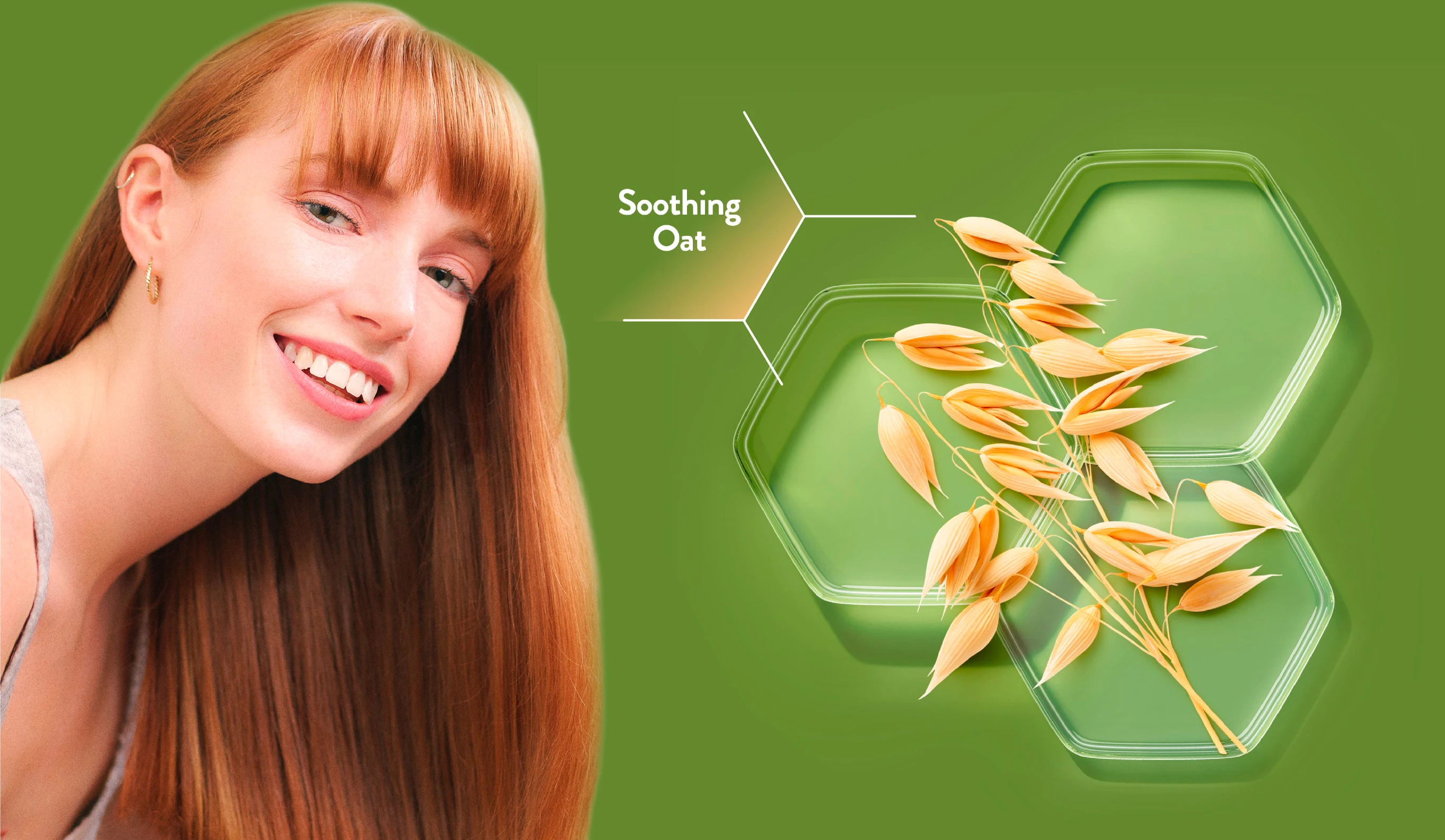Key takeaways:
Your skin microbiome is the make-up of all the good and potentially bad bacteria that live on and slightly beneath the surface of your skin.
The more balanced and diverse the microorganisms on your microbiome, the healthier your skin.
Factors like age, genetics and environment all affect the microbes that make up your skin microbiome.
Your Skin Microbiome: Everything you need to know
Your skin is your body’s largest organ, covering a surface area of between 1.5 and 2m², and one of its most important, playing a vital role in keeping you healthy. Your skin is important for many reasons, including keeping out dangerous organisms such as germs and protecting against the sun’s rays. It also helps to regulate your temperature and allows your body to retain its essential moisture.
Due to the fact your skin is the part of your body most exposed to the elements, it has to deal with damage every day. And while it is well versed in recovering effectively from this damage, it never hurts to give it that little extra help to ensure your skin stays as healthy as possible.
One way your skin battles to keep itself healthy and resilient is through working with the diverse range of microorganisms that live on and beneath its surface. Your skin is home to billions of microbes, all of which are invisible to the naked eye. Collectively, these microorganisms make up your skin microbiome, a complex ecosystem that co-exists on the surface of your skin.
A large portion of the organisms living on your skin are bacteria that are good for your skin and your body. It’s important that you adopt a skincare regime that seeks to find that perfect balance, nurturing a microbiome that is beneficial to your skin’s wellbeing.
In this article, you can find out more about your skin’s microbiome, the importance of diversity and how to look after your own microbiome, including:
What is skin microbiome?
Microbiome is a word that has become well known in recent years, thanks to the greater understanding of the different yeasts, parasites and bacteria that live on and in the human body.
It was most often used to refer to the diverse network of microorganisms that maintained a healthy balance in the gut. Now, it’s also recognised as being present in the mouth, on the skin and in other important parts of the human body.
Your skin’s microbiome is the collective name for the ecosystem of tiny microorganisms that live on and beneath the surface of your skin. It’s made up of a diverse range of different organisms playing different roles, including:
Bacteria – A variety of microscopic organisms which can be both potentially harmful and beneficial to the health of your skin
Fungi – Microbes that can be harmful or helpful, a heavy build-up can cause fungal infections
Mites – Insect-like microorganisms, invisible to the human eye, that can cause irritation in large numbers
Viruses – Microscopic molecules that, if allowed to multiply, can cause infection or illness on the skin
The different organisms present previously led scientists to believe that they could be potentially harmful. However, it’s now understood that maintaining the right balance can be hugely beneficial to your skin. A balanced and well-tended to skin microbiome is effectively an invisible barrier that protects your skin from disease and supports a healthy immune system.
Previously, it was thought that the skin microbiome lived only on the skin’s surface. However, research has found that it goes much deeper – into sweat and hair glands, having an even greater impact on the health of your skin. Studies have also found that it interacts with other (immune) cells in your body, working together to maintain a beneficial balance.
Each person’s microbiome is unique, much like their fingerprints or DNA. As such, there’s no one correct, or healthy make-up to have. It’s important to understand that the different mixes of organisms that exist on your skin are vastly different, even across other parts of your body. This means that your microbiome differs from your head, right down to your toes.
For example, several varieties of microbe, like Corynebacterium, thrive in areas where you’re more likely to sweat, such as your forehead or under your arms. Others, such as Proteobacteria, are more suited to smoother, drier skin, like the inside of your forearm. Some, like Staphylococcus, tend to congregate in areas of higher humidity and pH, such as the elbow and knee crease and the soles of your feet.
With this in mind, it’s important to remember that an effective skincare routine will need to be varied to make sure the microbiome is well balanced across a range of different ecosystems on your skin.
How does a diverse microbiome affect my skin health?
The health of your skin is linked to the diversity of your microbiome. Having the right microbes on and beneath the surface of your skin is important, but the presence of too many or too few can lead to an imbalance that negatively impacts the health of your skin.
These microbes work together to protect against harmful germs that you may encounter in the environment - by producing compounds to help fight off the harmful germs and by alerting your skin’s immune system to defend the skin to prevent skin issues and infections. Each individual organism also has unique strengths and weaknesses, so the broader the spectrum present, the better for your overall health.
A balanced community of microorganisms that are working together can keep your skin protected and healthy. A diverse microbiome also helps to improve your skin’s appearance. A healthy complexion free of blemishes, acne and dry patches is one sign that the microbes on your skin are thriving and properly balanced.
External factors such as environment (climate, pollution) and lifestyle (occupation, hygiene) can influence/have an impact on your microbiome’s natural balance. This can weaken the skin barrier, making your skin feel dry, sensitive and itchy.
What skin conditions can be caused by an unbalanced microbiome?
While a strong balance in your skin’s microbiome can be beneficial to the health and the appearance of your skin, imbalances can result in irritation and dryness and has been associated with the development of skin conditions.
This is partly because your skin acts as a natural barrier between your body and the external environment. It helps prevent ingress of any harmful microbes that can cause infection and illness. Whenever this balance is off, you’re at increased risk of developing a skin condition as your skin barrier is compromised, so less effective at fending off harmful bacteria.
An unhealthy and imbalanced microbiome has been linked to a wide range of related skin conditions, including:
Acne – A skin disorder that develops when follicles on your skin become clogged with natural skin oil. Usually common on naturally oily areas like your face, upper back, shoulders and chest. An excess of microorganisms like Propionibacterium and Malassezia is a contributing factor in acne
Atopic dermatitis – A form of eczema, symptoms can include red, itchy and flaky skin. This can occur anywhere on the body and can flare-up at any time of the year. However, eczema is most common on parts of the body such as the elbow and knee creases where Staphylococcus aureus is primarily found. Levels of the bacteria has been shown to be higher when the disease flares
Dandruff – A skin condition that inflames the affected area, usually the scalp. Skin can become irritated and flaky, with a red appearance. Dandruff or seborrhoeic dermatitis is associated with a proliferation of the fungus Malassezia, an organism commonly found on the scalp
What affects skin microbiome diversity?
To effectively nurture diversity and bring about a beneficial balance in your skin’s natural ecosystem, it’s important to know what can affect the microbiome. Here are just a few of the factors that can come into play:
Age – Your skin microbiome is constantly changing and evolving from the minute you’re born, through puberty, right through to adulthood and old age – altering alongside your body’s growth
Gender – Hormonal differences between men and women can produce different microbiomes. Men generally sweat more than women, for example
Genetics – Your DNA contributes to the health of your skin. For example, certain people are naturally more susceptible to skin disorders, such as eczema, than others
On top of this, there are also several external factors to be aware of, including:
Environment – The air quality and your surroundings vary greatly between rural and urban locations, affecting the organisms found on and beneath the surface of your skin
Workplace – Different organisms thrive indoors and outside, affecting various places of work, from offices to industrial surroundings
Climate – If you live in a warmer climate, your skin microbiome will generally be different to those who live in areas with colder weather
Diet – The foods you eat can alter your microbiome, with effects lasting for years, or possibly even a lifetime
Hygiene – How often you wash and which products you use, have an impact on the amount and type of microbes that live on your skin
While you can’t affect many of these directly, developing a strong and effective skincare routine means being aware of what is having an impact and taking those factors into account when choosing products or routines.
How can I improve my skin microbiome balance?
Improving and maintaining the balance of your skin’s microbiome is vital to ensuring your skin is healthy. Nurturing your skin is key to this and there are several simple ways to do this and ensure you keep your skin looking its radiant best. Here are just a few top tips:
1. Keep hydrated
Drinking plenty of water helps keep your skin healthy. Your skin cells are made up partly of water, so dehydration can negatively affect your microbiome balance. Try to drink the recommended eight glasses of water every day to replenish your cells and rehydrate yourself.
2. Don’t over-clean
Over-cleaning your skin can be just as bad as not cleaning it enough. Using hand-sanitisers and soaps with an alkaline pH too frequently can deplete and damage your skin microbiome, as it washes away natural oils and alters the normal skin pH at which the skin microbiome thrives. Be smart by allowing natural oils to build up and wash using products which are formulated to gently cleanse the skin without drying.
3. Get out and exercise
Your skin microbiome is affected by your environment and your interactions with nature, as well as how much you exercise. Take more walks in the countryside, hit the gym or join a class to nurture a healthy microbiome. Working up a sweat can contribute to the overall diversity of your skin microbiome and to positive overall health and wellbeing.
4. Moisturise your skin daily
Keeping your skin hydrated is the key to a healthy microbiome. Try using AVEENO® Skin Relief Moisturising Lotion, formulated with a Prebiotic Triple Oat Complex*. It not only keeps dry and sensitive skin hydrated and smooth, but also helps to keep the skin microbiome in perfect balance. Add it to your morning routine or apply any time when your skin feels sensitive. *In vitro test
Achieving a healthy skin microbiome is important for healthy skin. Look after the trillions of microorganisms present on your body to help your skin look after you.

